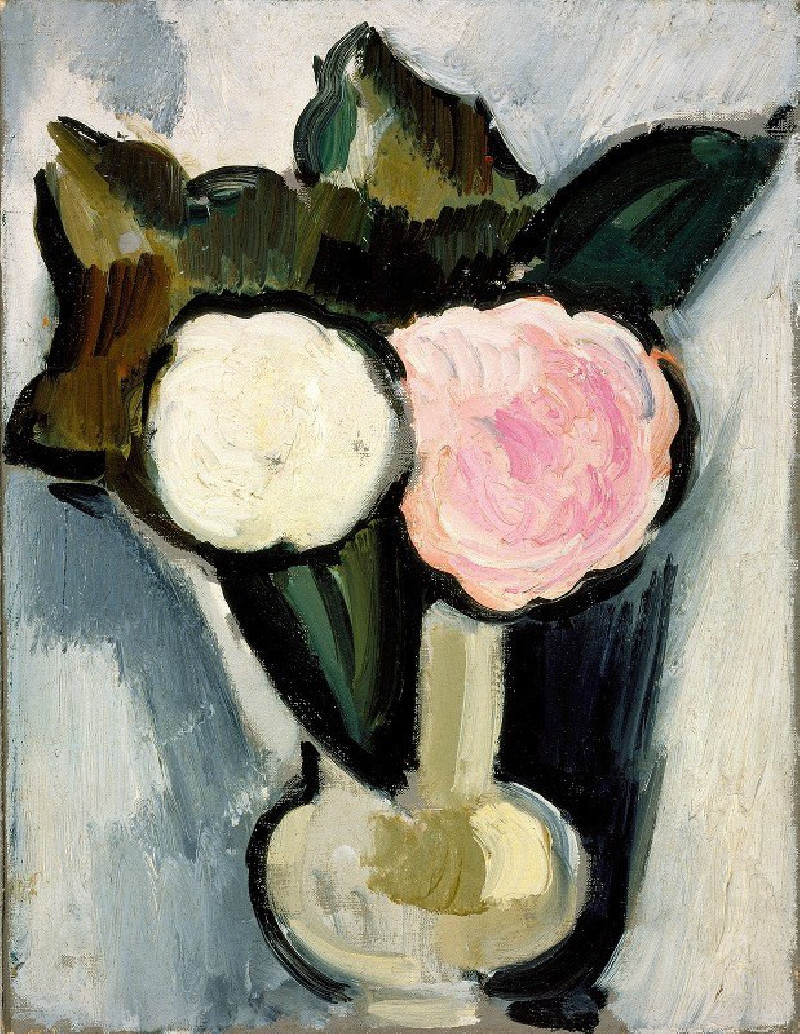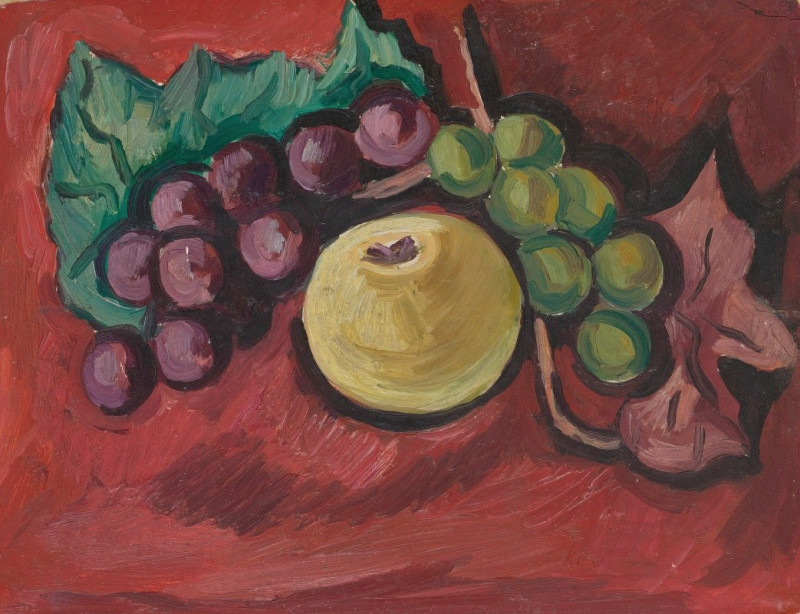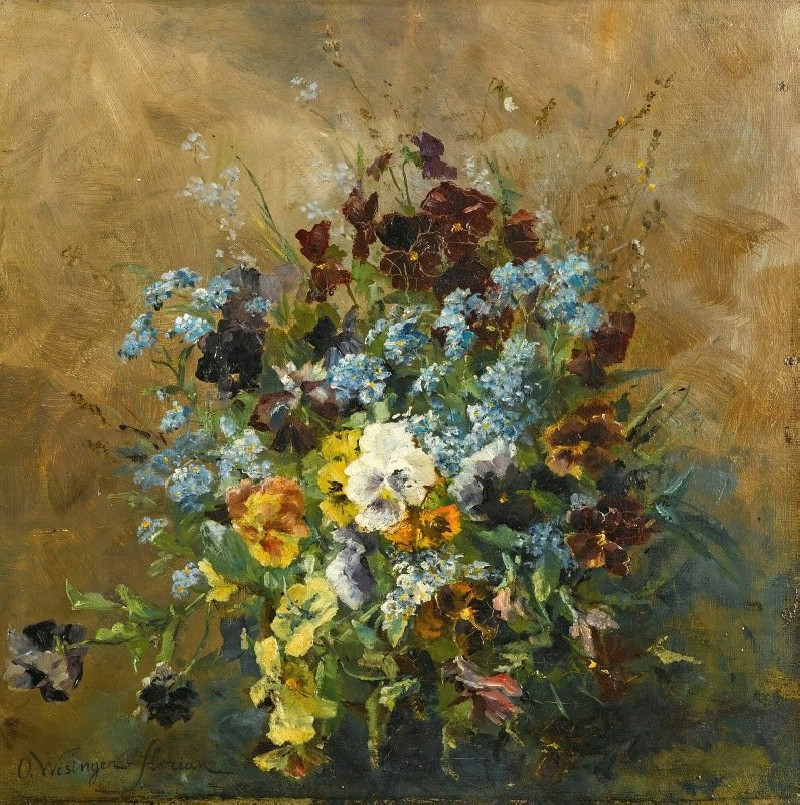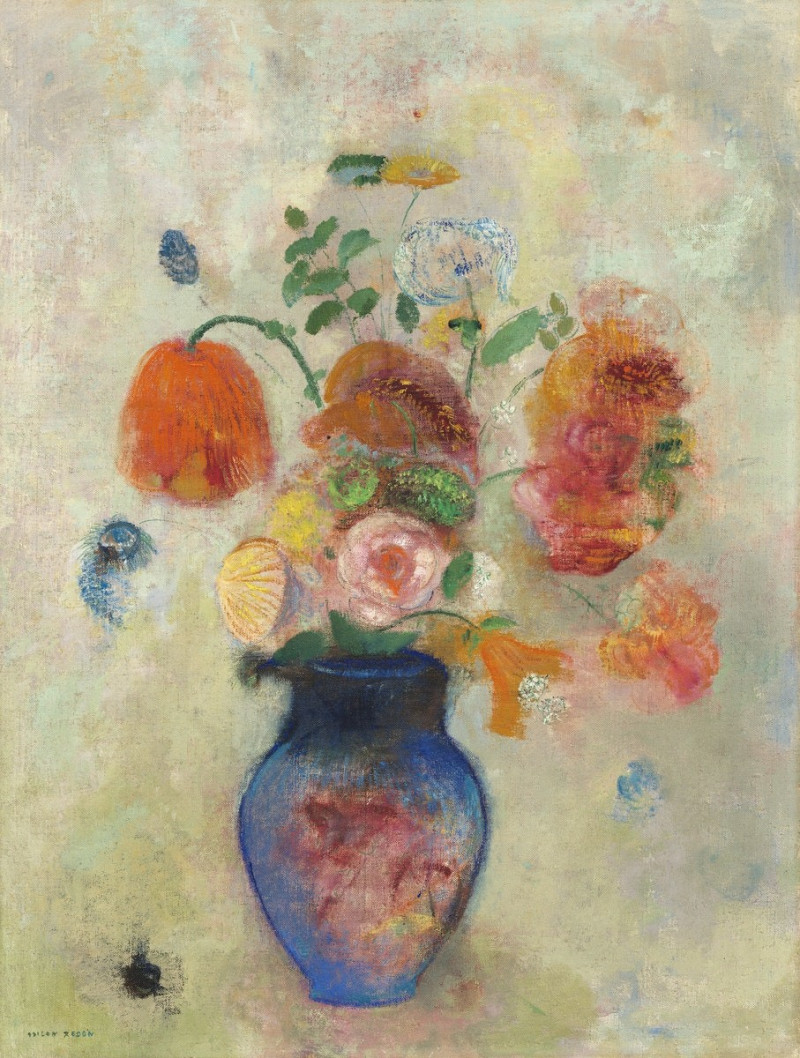Untitled (Still Life) (1919)
Technique: Giclée quality print
Recommended by our customers
More about this artwork
Welcome to an artistic immersion with Marsden Hartley's vibrant creation, "Untitled (Still Life)" from 1919. In this compelling piece, Hartley presents a tableau that is both intimate and expansive, bridging the elements of still life with a vividly portrayed landscape in the backdrop.At the heart of the painting rests a dark, stout vase situated on a boldly striped tablecloth in red and white. From this vase springs a bunch of lively flowers with lush, green stems and radiant red blooms that infuse the scene with a burst of energy and life. These flowers bring a sense of optimism and fragility, contrasting dramatically with the solidity of the vase.Beyond the immediate foreground, Hartley invites viewers into a richly textured landscape. Rolling fields lead the eye toward distant mountains under a dynamic sky swirling with clouds tinged in shades of blue and pink, suggesting either the dawn of day or the approach of evening. This backdrop provides a stark contrast to the structured format of the still life, offering a sense of freedom and vastness that complements the confined space of the tabletop arrangement.This painting is a testament to Hartley’s prowess in blending genres and crafting a scene that extends beyond the canvas, inviting viewers to explore layers of narrative and emotion, tightly knit within strokes of paint. It embodies a unique synthesis of still life and landscape, speaking to nature’s enduring beauty and the quiet moments that frame our daily lives.
Delivery
Returns
Marsden Hartley (1877–1943) is a Maine native and a leading American Modernist painter, along with his contemporaries, Arthur Dove and Georgia O’Keeffe. He is well-known for employing geometric abstraction as well as bold colors and lines. His paintings depicted imagery of nature, landscapes, figures, and still-life. Sponsored by Alfred Stieglitz, Hartley went to Europe in 1912, spending most of his time in Germany, where he met Gertrude Stein, Wassily Kandinsky, and Franz Marc. After returning to America in 1930, he reconnected with the New England of his childhood and started to portray the landscapes of New England in his paintings.














































